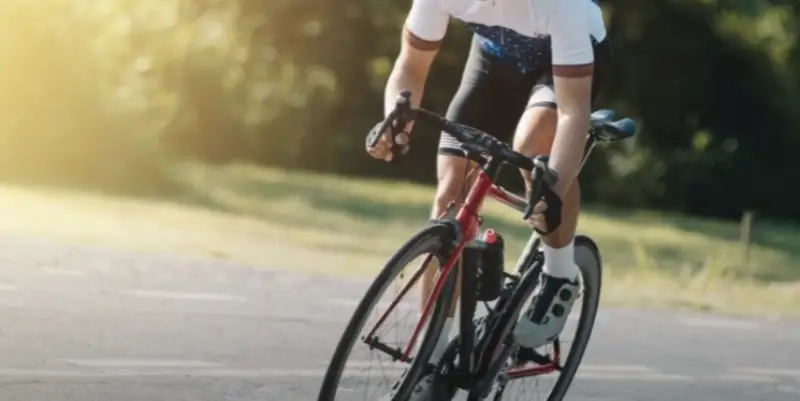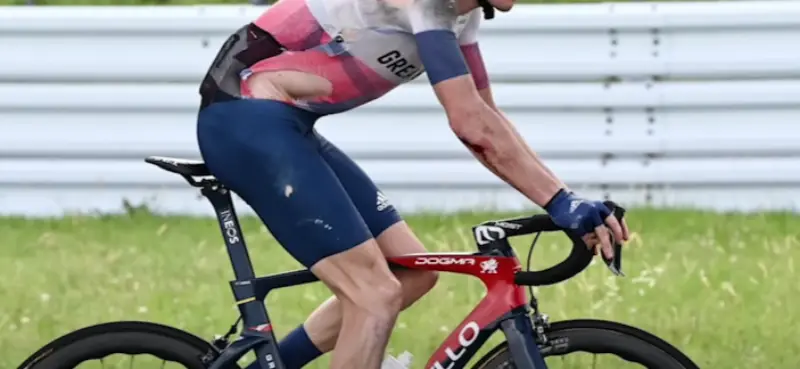Repeated pressure on the perineum while cycling can lead to inflammation of the prostate. Because of pressure on the perineum, cycling has the potential to irritate the prostate. Prostatitis or pain in the pelvis can be associated with bike riding because of pressure from specific seats.
There is no positive association between cycling and the development of prostate cancer. Risk factors for prostate cancer development could be reduced by cycling. Although It has been shown that cycling too often may increase prostate cancer risk, the results need to be explained much more.
This blog post will provide essential facts to help you understand the connection between cycling and prostate cancer.
Cycling Bad For Prostate Cancer: 8 Important Facts

While cycling is safe and beneficial for overall well-being, there are some important facts to consider when evaluating its potential effects on prostate cancer risk and progression. Let’s explore six key facts to help you better understand the relationship between cycling and prostate cancer:
Prostate Problems and Cycling: Examining the Evidence
Even though nearly one in two men over the age of fifty suffer from prostate problems and benign prostatic enlargement (BPH) (and nine out of ten men in their seventies and eighties may suffer from BPH) and one in eleven men may develop prostate cancer, the most common form of cancer in men, there does not seem to be a causal link between cycling and prostate enlargement or prostate cancer based on the literature we are aware of.
Potential Impact of Cycling on Prostate Health
Bicycle riding trauma can irritate and exacerbate a man’s prostate. Some suggest that it may cause prostatitis (prostate inflammation) and chronic pelvic pain. However, a recent study published in the Journal of Men’s Health by researchers at University College London found no link between cycling and infertility or between cycling and erectile dysfunction. The study found that prostate cancer rates were higher among men over 50 who cycled over 3.76 hours per week, particularly in those who cycled over 8.5 hours per week.
- Prostatic inflammation: Cyclists are more likely to experience recurrent inflammation of the prostate because of repetitive compression and trauma to the perineum. A chronic inflammatory condition puts one at risk for cancer.
- Testosterone: Prostate cancer cells may grow more rapidly if testosterone levels rise following intense exercise. Only 15-60 minutes into the test, however, do men over 55 experience this increase. Unless banned anabolic steroids are taken, testosterone levels in elite athletes drop behind normal levels.
- Generation of free radicals: Exercise, particularly in untrained persons, leads to the generation of reactive oxidative species (ROS), which cause DNA damage and ultimately contribute to the progression of cancer.
Interpretation of Study Findings
Researchers showed that cycling may increase PSA levels as cycling increases levels of health consciousness, leading to more frequent check-ups and a greater chance of being diagnosed. Cycling improves the chance of getting prostate cancer or cyclists suffer from pain around their prostate or blood in their urine, which makes them more likely to get tested.
Cycling time and prostate cancer may both be related to an unknown factor not considered by the study or there may be a genuine biological connection between trauma in the prostate area and cycling. They noted they were surprised by the size of the prostate cancer finding, so further research is warranted, but we cannot conclude from this study. Their results do not, however, prove that cycling causes prostate cancer. It is not recommended that people reduce their cycling volume. Currently, cycling has many health benefits that outweigh any possible risks.
Cycling and PSA Levels

Men who are going to undergo a PSA test shouldn’t be cycled too much beforehand. prevent a possible false reading because cycling may transiently increase their PSA levels, which are often monitored for prostate problems.
Consulting with Your Doctor
It may be helpful to discuss with your doctor the potential impact of cycling on prostate health if you cycle frequently and have prostate problems, particularly if you are going to get a PSA test. It has also been suggested that men should avoid cycling during episodes of prostatitis or chronic pelvic pain.
Reducing Pressure on the Perineum
As the prostate is just beneath the bladder and in front of the rectum, cycling, and prostate problems are related to reducing pressure on the perineum or groin area. It is important to wear padded shorts, stand regularly on the pedals, and considering the position and change of the saddle are all ways to do this. In 2007, a study in the British Journal of Urology International found that a grooved seat caused less pressure and numbness in the penile area and improved erectile function.
Saddle Options for Reduced Pressure
A particular approach has been to use saddles that aim to reduce pressure on the perineum. A saddle will reduce pressure on the perineum or groin area by having grooves and holes. A saddle will have holes cut out and a cutaway at the back. More recently, there are split saddles and noseless saddles. You should ensure that the edges of saddles with holes do not inadvertently increase pressure or pinch.
Choosing the Right Saddle
Many saddle manufacturers today make saddles with grooves, cut-out holes, and cutaways, which are now much more available. There are too many to list. However, it is important to remember that the most expensive solution is only sometimes the best answer. The answer is to look for a saddle that will most likely reduce pressure for you and enable you to adjust it best for your shape and riding style if possible.
6 Benefits of Cycling on Prostate Health
Cycling is a popular recreational activity and exercise that benefits overall health and well-being. Among its many advantages, cycling has been shown to affect prostate health in men positively. Here are some benefits of cycling for your prostate:
Physical Exercise and Prostate Health
Regular physical exercise, such as cycling, is associated with a reduced risk of developing prostate-related conditions. Cycling is a low-impact aerobic exercise helps maintain a healthy weight, increase cardiovascular fitness, and strengthen muscles. Studies have shown that men who engage in regular physical activity, including cycling, are less likely to develop BPH or experience symptoms such as urinary retention and frequent urination.
Cycling Improves Insulin Sensitivity
Regular cycling can lead to improved insulin sensitivity, which can help lower the levels of growth cytokines such as insulin-like growth factor (IGF). This may reduce the risk of certain urologic cancers. Additionally, better insulin sensitivity can strengthen your immune system by increasing natural killer cells and lymphocytes and enhancing your body’s ability to recognize and combat cancer cells.
Improved Blood Circulation
Blood circulation is improved by cycling throughout the body, including the pelvic region where the prostate is located. Increased blood flow makes it easier for oxygen and nutrients to reach the prostate gland, promoting its overall health and function. By reducing inflammation and supporting cellular repair, improved circulation through cycling may help reduce the risk of prostate disorders.
Hormonal Balance

Regular cycling can help maintain hormonal balance in the body, which is crucial for prostate health. Male hormones, like testosterone, play a big role in prostate function, and imbalances can contribute to the development of prostate conditions. By engaging in cycling as a form of exercise, men can help regulate hormone levels and support optimal prostate health.
Urinary Function
Maintaining good urinary function is essential for prostate health, especially as men age. A good cycling workout can strengthen your pelvic floor muscles, which are crucial in controlling urination and supporting the bladder and prostate. By improving urinary function through cycling, men can reduce the risk of urinary symptoms associated with prostate enlargement or inflammation.
Prostate Cancer Risk Reduction
Cycling has the potential to reduce prostate cancer risk, which is one of the biggest benefits. Prostate cancer is one of the most common cancers among men, and maintaining a healthy lifestyle, including regular exercise like cycling, can help lower the risk of developing this disease. Studies have shown that physically active men, including cyclists, have a lower incidence of prostate cancer compared to sedentary people.
Conclusion
Cycling has always been lauded as a fantastic form of exercise, enhancing cardiovascular fitness, boosting insulin sensitivity, and promoting overall well-being. In prostate health, cycling also plays its part – from improving blood circulation in the pelvic region to reducing prostate cancer risk for physically active men.
Despite some studies showing an increased risk of developing prostate cancer among avid cyclists, it’s imperative to remember that these results do not definitively establish cycling as a cause of prostate cancer. So, while you enjoy your rides, be aware, be proactive, and take measures to reduce pressure on the perineum.
FAQs
Are There Warning Signs Cyclists Should Watch Out For Regarding Prostate Health?
Cyclists should pay attention to symptoms such as persistent perineal discomfort, numbness, erectile dysfunction, or changes in urinary function. These symptoms may indicate issues related to prostate health that warrant further evaluation by healthcare professionals.

![8 Important Facts About Cycling and Prostate Cancer [6 Benefits]](https://cacyclinghub.com/wp-content/uploads/2025/07/8-Important-Facts-About-Cycling-and-Prostate-Cancer-6-Benefits.jpg)
